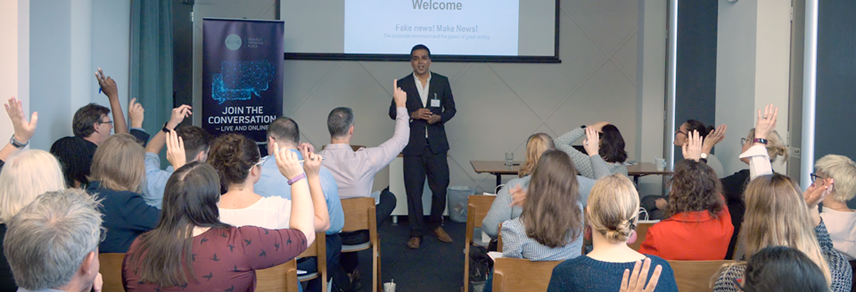
CORPORATE NEWSROOMS AND THE IMPORTANCE OF EDITORIAL-LED IC
As organisations continue to expand, internal communicators must be equipped to face the vast network of employees that today define the modern business landscape. Yet achieving positive engagement is often a fine balance between firm, grounded IC principles, and a flexible internal structure that welcomes new ideas. At a recent talk held in London by internal communications agency, Sequel Group, communicators gathered in the capital to discuss the complex challenges that face the industry.
Organised in collaboration with Sequel’s learning and networking group, Aspic, the talk sought to create dialogue around the corporate newsroom model and how organisations can benefit from an editorial-led approach to IC. Entitled, ‘Fake News? Make News! Changing the landscape of internal messages with the corporate newsroom,’ the seminar welcomed experienced speakers, Kunal Dutta, chief editor of digital channels at Shell, and Premal Spiegel, newsroom manager at Mondelez International.
For Dutta, a key focus on storytelling was emphasised throughout his presentation, delving back into his own career as a multi-platform writer for several top-flight publications. Using concise and effective language, Dutta specified powerful stories through both creative and compliant strategy, heralding true, interesting, timely and authentic content that tell “Human stories.” Dutta also specified a “Brutally single-minded” approach that “Tells the story in emotions and ideas and not ‘infrastructure’ and initiatives.”
Responsible for Shell’s internal digital channel, Inside Energy, Dutta’s focus on Shell’s content favours a strong, adaptable style, specifying repurposed content and a strong editorial identity. However, avoiding the many limitations that exist within large organisations involves a tactful and disciplined outlook, as Dutta emphasises the importance of “Writing specifically for platform.”
Similarly, for Spiegel and Mondelez International, internal communications within a network of approximately 100,000 colleagues across five different geographic regions is a challenge. With a complex breakdown of brands, and a newsroom team comprised of publishers, channel managers and journalists, Spiegel highlighted the importance of sustainable tools that can work towards creating, distributing and measuring content.
Yet for both Shell and Mondelez, quality outweighs quantity, and as content is aimed at fitting the broader goals of the organisation, cultivating a more editorial-focused attitude wields not only positive results with regards to content, but increased engagement across a workforce.


